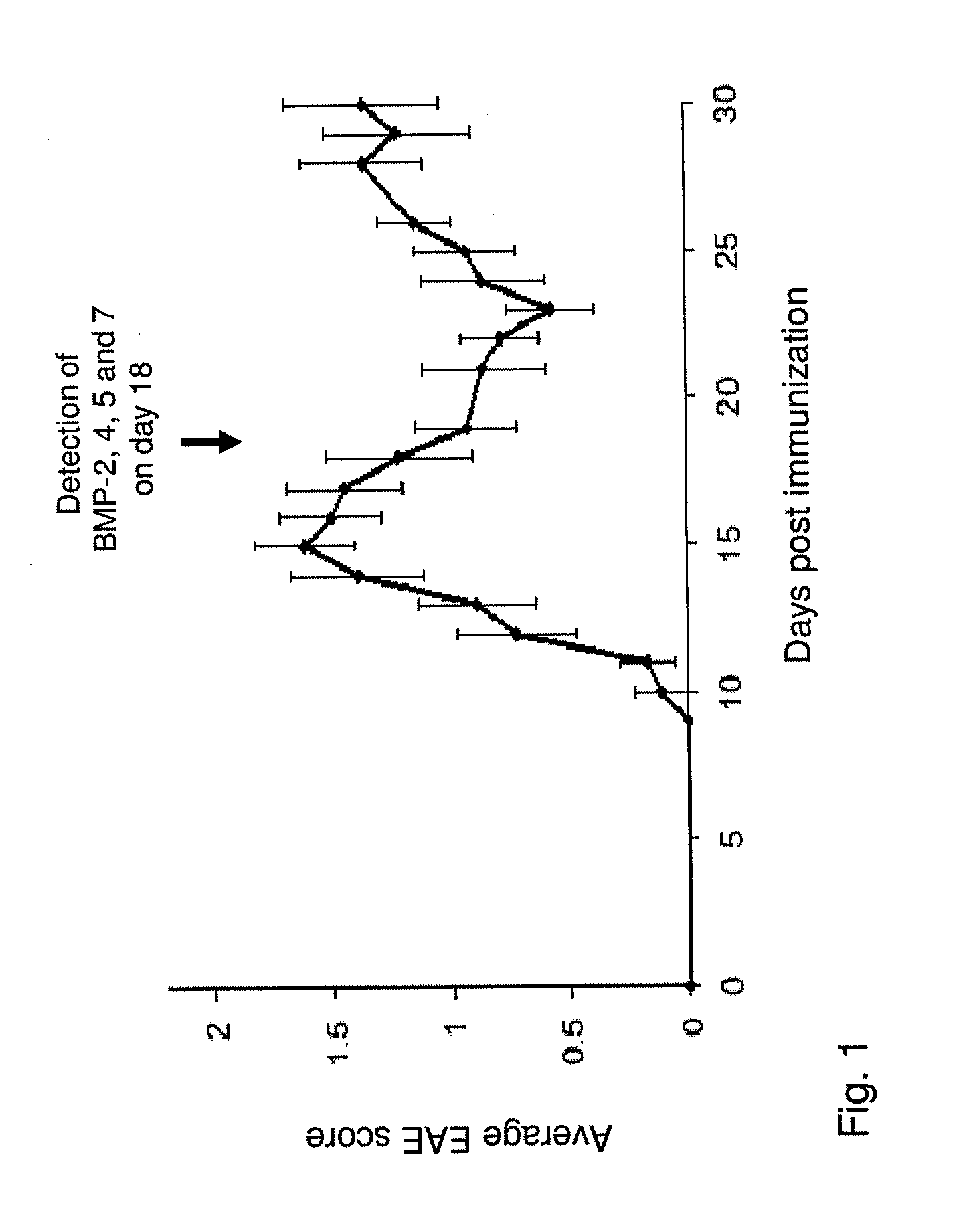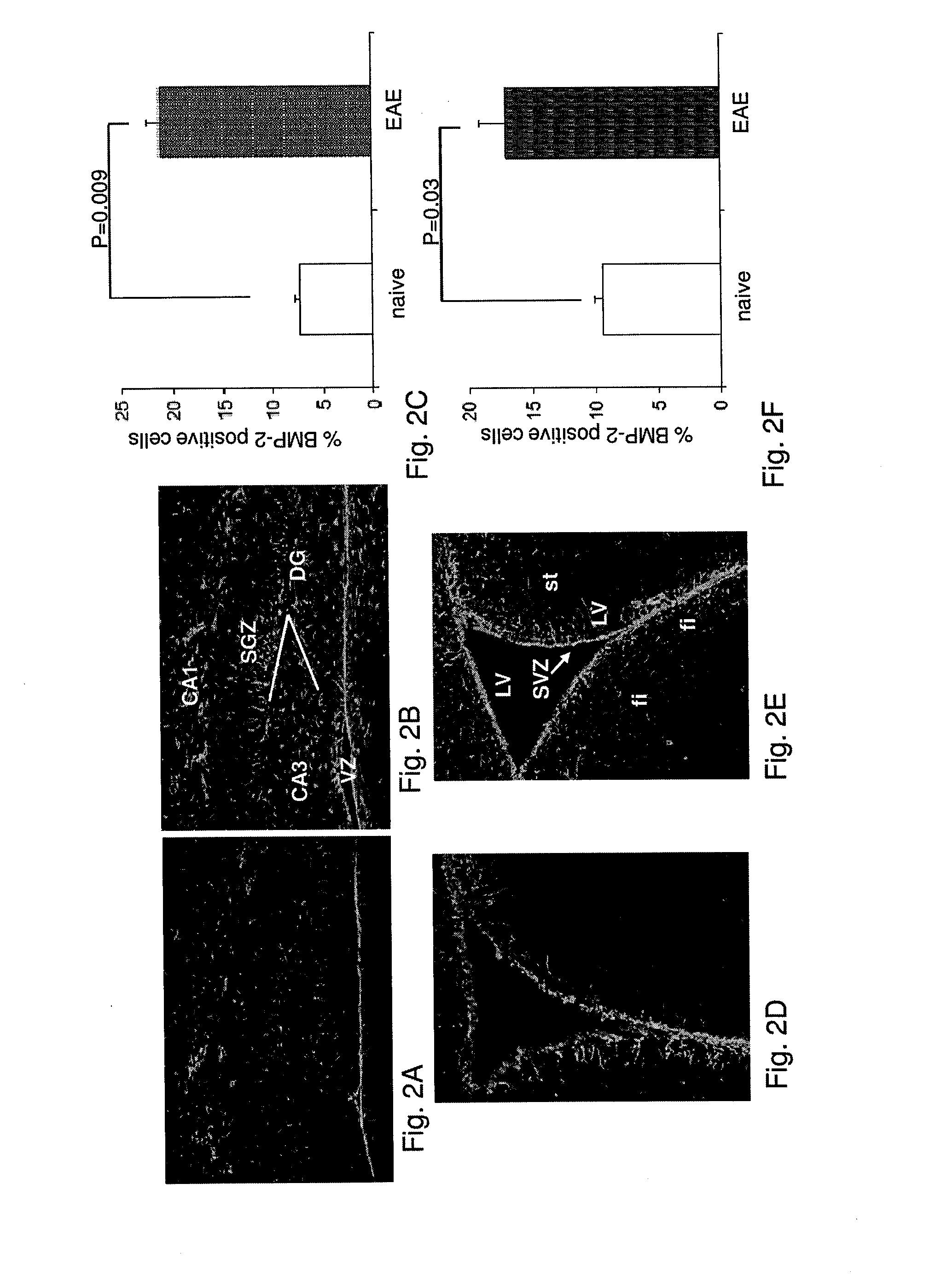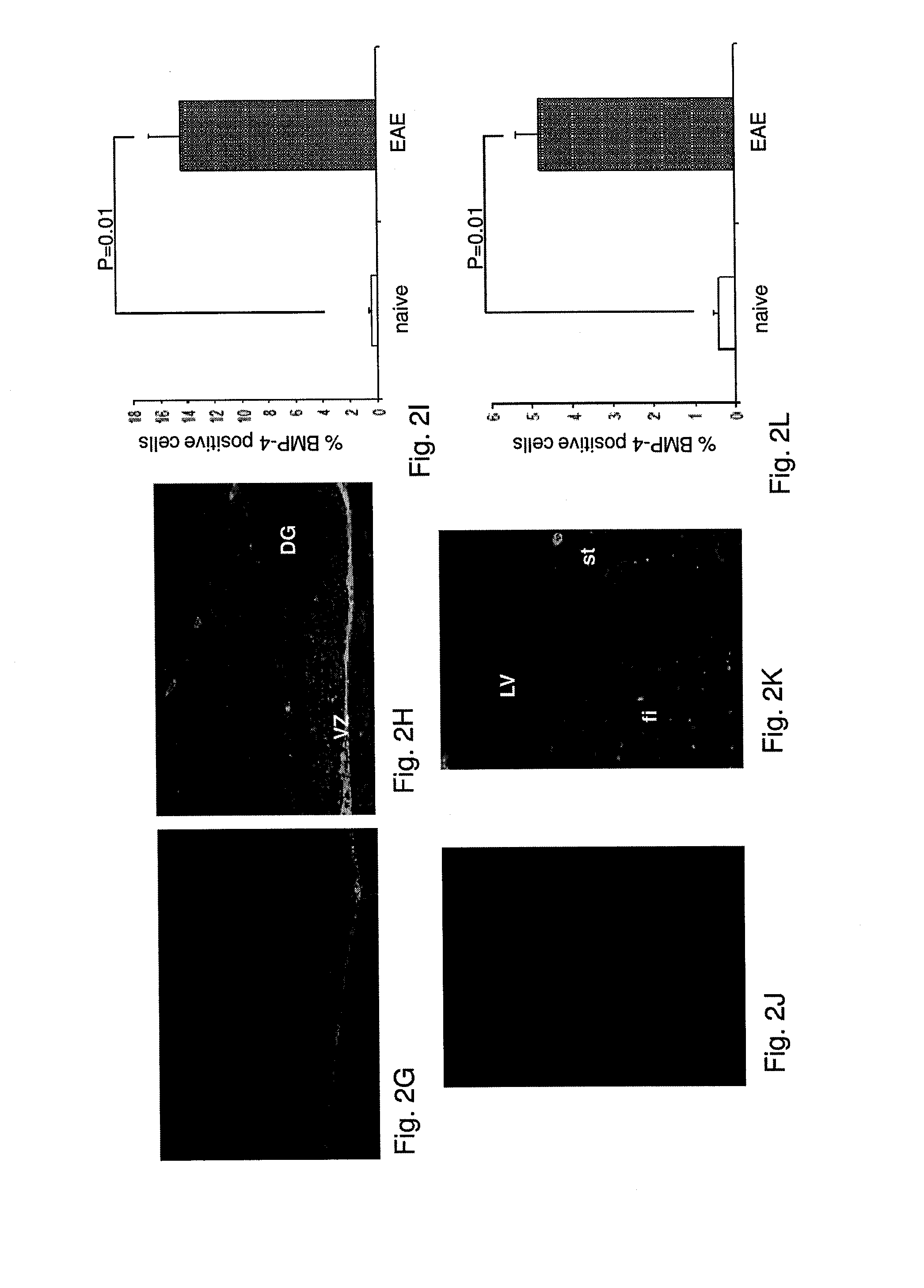Use of blocking agents of bone morphogenic protein (BMP) signalling for the treatment of neuroinflammatory and neurodegenerative diseases
a technology of bone morphogenic protein and signalling agent, which is applied in the direction of antibody medical ingredients, drug compositions, peptides, etc., can solve the problems of many lesions failing to remyelinate successfully
- Summary
- Abstract
- Description
- Claims
- Application Information
AI Technical Summary
Benefits of technology
Problems solved by technology
Method used
Image
Examples
example 1
Levels of BMPs 2, 4, 5 and 7 in Neuroproliferative Areas
[0261]RR-EAE was induced in SJL female mice as described above. FIG. 1 demonstrates the variation in the average score of RR-EAE symptoms in mice, post RR-EAE induction. On day 18 post induction, the brains of 3 mice were removed and the levels of the bone morphogenic proteins (BMPs) 2, 4, 5 and 7 in the neuroproliferative areas, the subgranular zone (SGZ, in the hippocampus) and the subventricular zone (SVZ, in the lateral ventricle), were examined by immunofluorescent staining of the brain sections with the relevant anti BMP antibodies.
[0262]As demonstrated in FIG. 2C and FIG. 2F, in naïve mice, of all the BMPs examined, BMP-2 was found to be the most abundant in both SGZ of the dentate gyrus (DG) and the ventricular zone (VZ), adjacent to the DG, as well as in the SVZ of the lateral ventricles (LV). In contrast, the levels of BMP-4, 5 and 7 in both neuroproliferative zones of naïve mice were insignificant (FIG. 2).
[0263]In c...
example 2
Systemic Administration of Antibodies Directed Against BMP 2, 4, 5 and 7 Ameliorates the Clinical Symptoms of RR-EAE
[0268]As shown in Example 1, BMP-2, 4, 5 and 7 were found to be induced in neuroproliferative areas of RR-EAE mice. Example 2 demonstrates that blockage of BMP signaling by intravenous injection of anti-BMPs neutralizing mAbs ameliorates the symptoms of EAE. Without wishing to be bound by theory, the reduction in EAE symptoms may be the result of induction of both neurogenesis and oligodendrogenesis processes.
[0269]Accordingly, SJL female mice with induced RR-EAE were intravenously injected with a combination of 15 μg / mouse of each of the following mAbs: anti-human BMP-2 / 4, anti-human BMP-5 and anti-human BMP-7, on day 9 post induction of EAE, as detailed above. PBS-treated EAE mice (vehicle) and EAE mice treated with the corresponding isotype control antibodies (IC) served as negative controls. Animals were daily monitored for EAE symptoms and scored as described abov...
example 3
Administration of Anti-BMPs Neutralizing Antibodies to Chronic EAE Mice
[0278]The effect of anti-BMPs mAbs on chronic (progressive) EAE mice is demonstrated in FIG. 5. Chronic EAE was induced in C57BL / 6 female mice by MOG35-55 peptide immunization, as described above. As shown in FIG. 5, the onset of EAE clinical symptoms in C57BL / 6 mice started on day 12 for all the groups presented.
[0279]Interestingly, treatment of C57BL / 6 EAE mice with anti-BMPs mAbs (at 15 μg / mouse) resulted in a decline of 23.7% and of 21.4% in the average clinical score on day 14 vs vehicle-treated group and IC-treated group, respectively (1.83±0.46 in the anti-BMPs treated group vs 2.4±0.29 in vehicle-treated group and 2.3±0.24 in IC treated group). This effect was maintained until day 33 post induction, in which the anti-BMPs treated group displayed a decline of 23.2% and of 21.8% in the average clinical score relative to vehicle-treated group and IC-treated group, respectively.
PUM
| Property | Measurement | Unit |
|---|---|---|
| fluorescent micrographs | aaaaa | aaaaa |
| confocal microscopy | aaaaa | aaaaa |
| pharmaceutical compositions | aaaaa | aaaaa |
Abstract
Description
Claims
Application Information
 Login to View More
Login to View More - R&D
- Intellectual Property
- Life Sciences
- Materials
- Tech Scout
- Unparalleled Data Quality
- Higher Quality Content
- 60% Fewer Hallucinations
Browse by: Latest US Patents, China's latest patents, Technical Efficacy Thesaurus, Application Domain, Technology Topic, Popular Technical Reports.
© 2025 PatSnap. All rights reserved.Legal|Privacy policy|Modern Slavery Act Transparency Statement|Sitemap|About US| Contact US: help@patsnap.com



